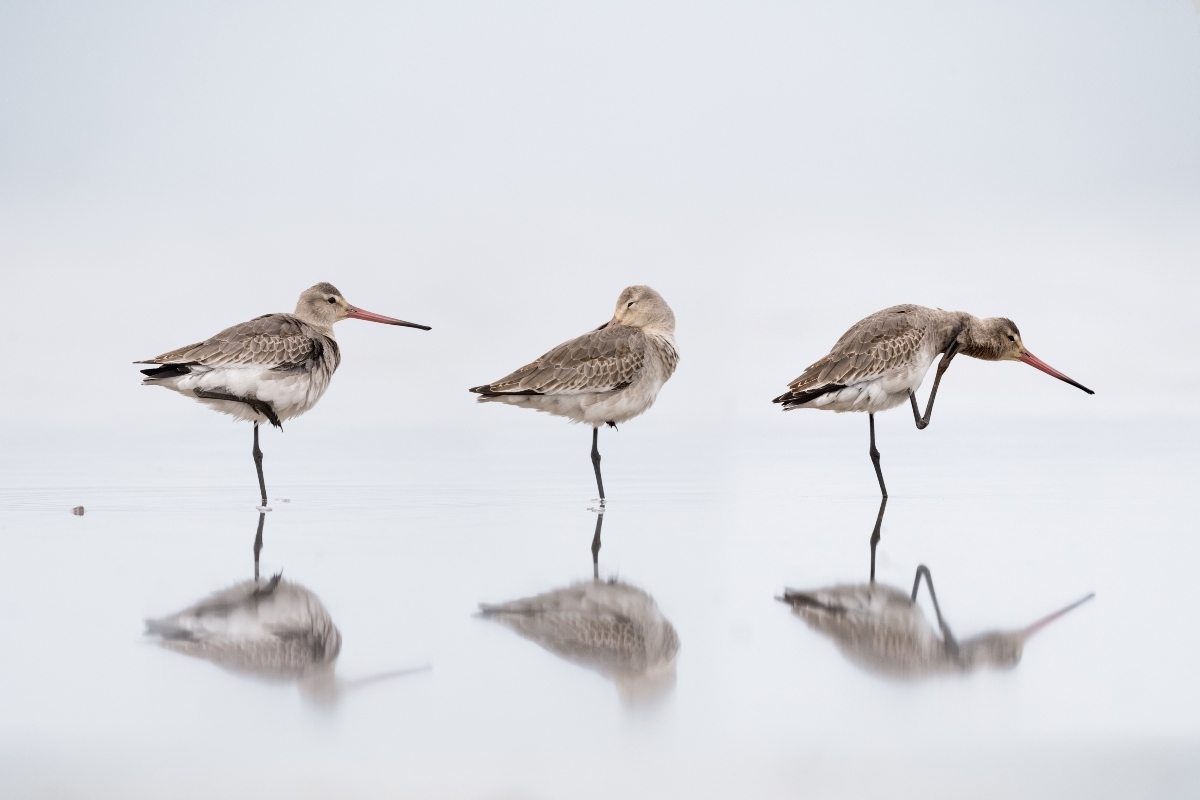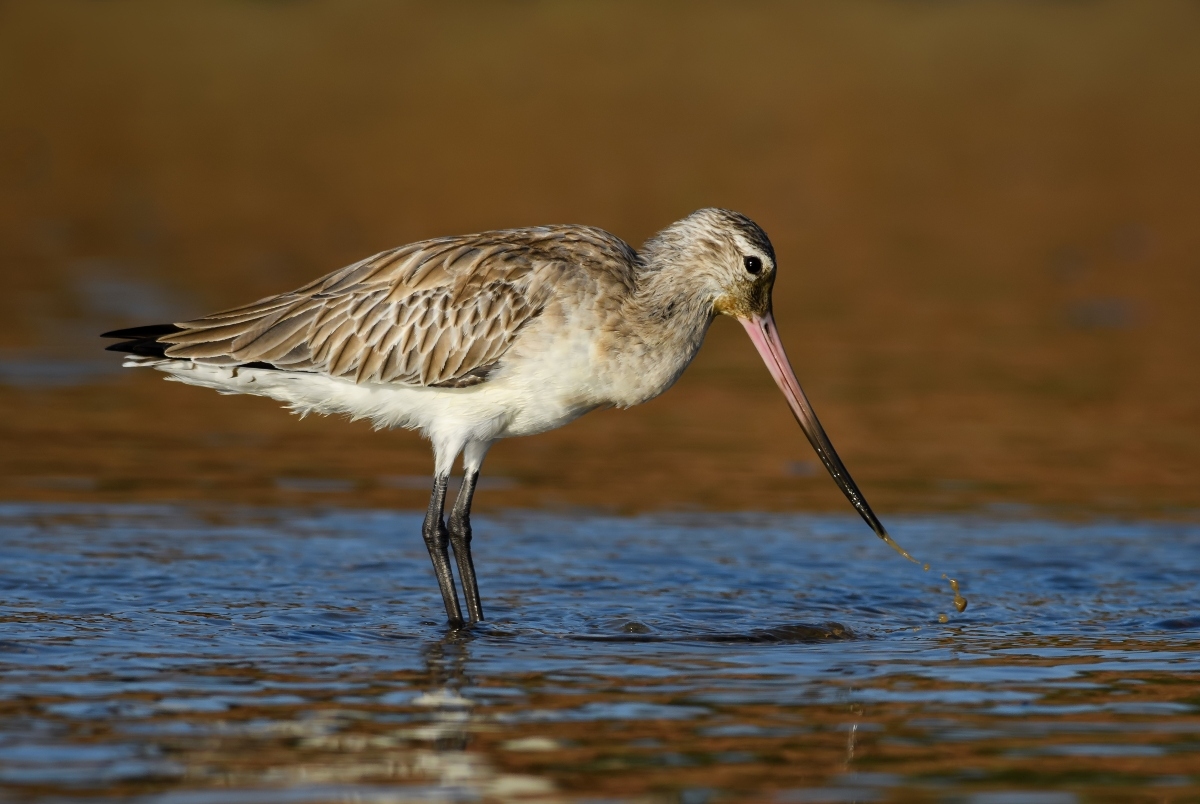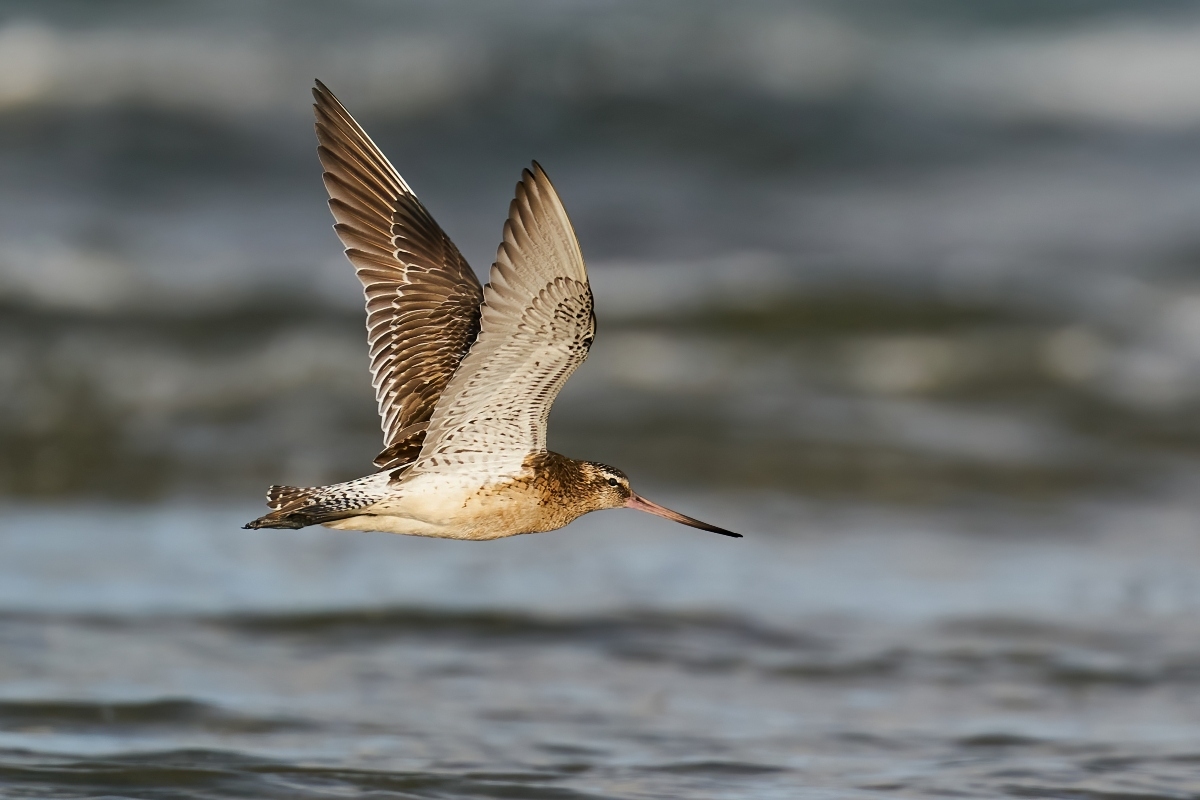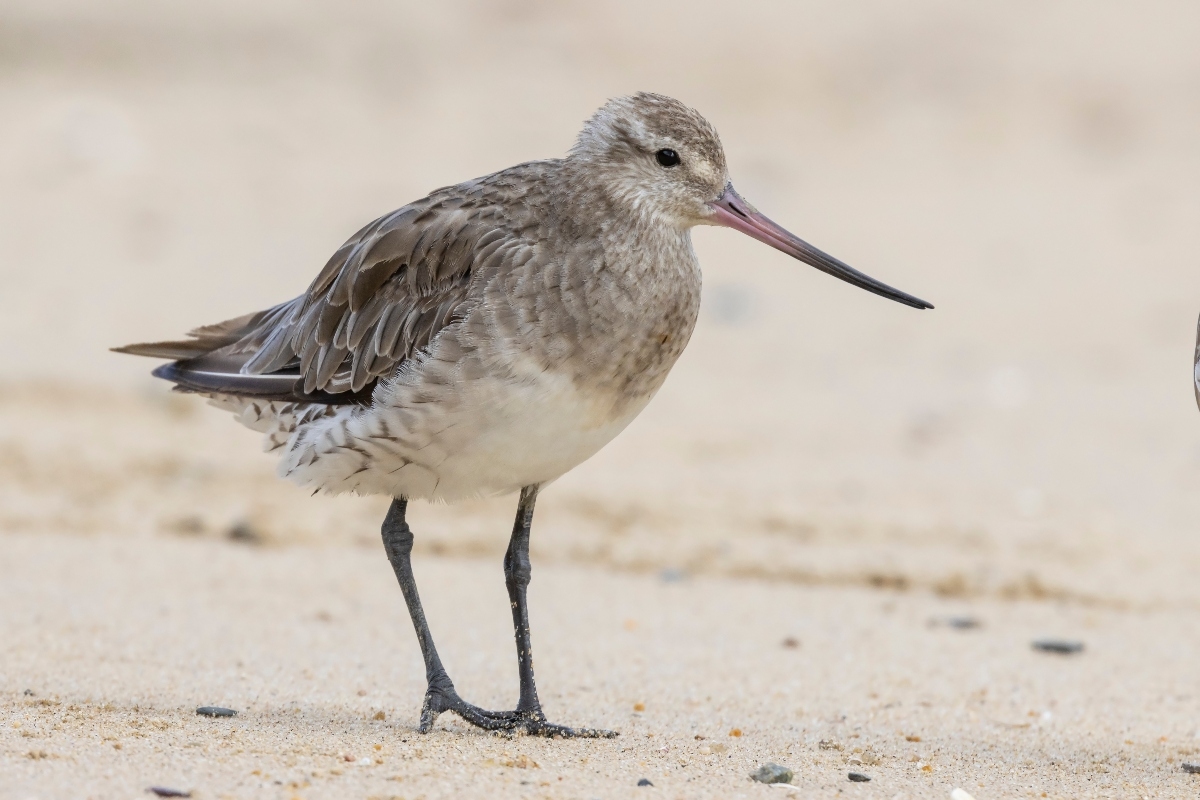Across the vast expanses of the world’s shorelines and wetlands, a slender, elegant wader probes the mud with its long, slightly upturned bill. This bird, known as the Godwit, is not just another wading bird. It’s a global traveler, undertaking some of the most remarkable migratory journeys known in the avian realm.

Godwits belong to the genus Limosa, and their long legs and bills are perfectly suited for their preferred habitats: tidal flats, marshes, and wet grasslands. These adaptations aid them in detecting and capturing invertebrates hidden below the surface, from worms to small crustaceans.
The beauty of the Godwit is not just in its delicate features or its synchronized group flights, but in its incredible endurance. Certain species of Godwits are known for their astounding non-stop migratory flights. The Bar-tailed Godwit, for instance, can fly from Alaska to New Zealand, covering about 7,000 miles without a single break. This feat is one of the longest migratory journeys without stopovers made by any bird species, earning Godwits the title of true marathon fliers.

Visually, Godwits are a treat. While in their breeding plumage, they display rich rufous and brick-red tones, which then transition to more muted grays and browns during the non-breeding season. Their graceful movements, combined with their striking appearances, make them a favorite among birdwatchers and nature photographers.
The call of the Godwit, a clear and melodic whistle, often signals changing seasons in their respective regions. In many cultures, the arrival and departure of Godwits are symbolic, marking the ebb and flow of time and nature’s cycles.

Yet, these incredible birds face challenges. Habitat loss, particularly the destruction of wetlands for agricultural and urban development, poses significant threats. Climate change further complicates their migratory patterns and breeding grounds, disrupting the delicate balance of their life cycle.
Historically, Godwits have been revered in various cultures for their determination and resilience. Their marathon journeys have been likened to human endeavors, symbolizing persistence, hope, and the unyielding spirit of life.

In the dance of the Godwit, we find a mesmerizing blend of grace, endurance, and adaptability. These birds, with their epic journeys, challenge our understanding of physical limits and inspire awe. As we work to conserve their habitats and understand their behaviors, the Godwit stands as a reminder of nature’s wonders and the interconnectedness of our global ecosystems.